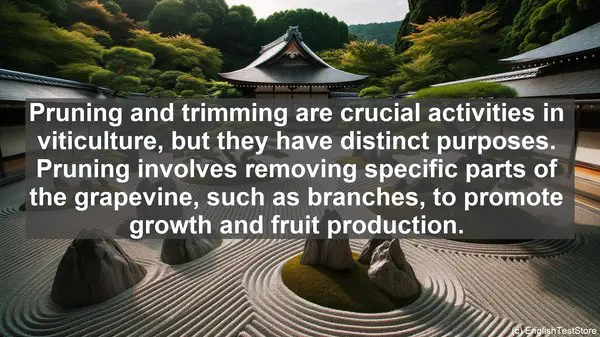Introduction: The Importance of Word Precision in Viticulture
As you embark on your journey in viticulture, it’s essential to grasp the precise meanings of various terms. In this lesson, we’ll focus on ten commonly confused words that can make a significant difference in your understanding and practice. Let’s dive in!
1. Vineyard vs. Winery
While both terms are related to wine production, they refer to different aspects. A vineyard is the land where grapes are grown, while a winery is the facility where the grapes are processed and turned into wine. Remember, a vineyard is where it all begins!
2. Pruning vs. Trimming
Pruning and trimming are crucial activities in viticulture, but they have distinct purposes. Pruning involves removing specific parts of the grapevine, such as branches, to promote growth and fruit production. Trimming, on the other hand, is more about maintaining the vine’s shape and preventing overgrowth. Both are essential, but at different stages.

3. Terroir vs. Climate
Terroir encompasses various factors, including soil composition, topography, and climate, that contribute to a wine’s unique characteristics. While climate is a significant component of terroir, it’s not the only one. Terroir is a broader concept, encompassing the entire environment in which the grapes are grown.
4. Must vs. Juice
When grapes are crushed, the resulting liquid is called must. It includes not only the juice but also the skins, seeds, and sometimes stems. Juice, on the other hand, refers to the liquid obtained after the must has been separated from the solid components. Must is the starting point for winemaking.
5. Tannin vs. Acid
Tannin and acid are both important elements in wine, but they have distinct effects. Tannin, typically derived from grape skins, seeds, and stems, contributes to a wine’s structure, astringency, and aging potential. Acid, on the other hand, affects a wine’s freshness, tartness, and balance. Both are crucial for a well-rounded wine.
6. Fermentation vs. Aging
Fermentation is the process by which yeast converts grape sugars into alcohol, resulting in the production of wine. Aging, on the other hand, refers to the period during which the wine matures and develops in flavor, aroma, and complexity. While fermentation is a relatively short process, aging can take months or even years.

7. Varietal vs. Blend
A varietal wine is made primarily from a single grape variety, such as Cabernet Sauvignon or Chardonnay. A blend, on the other hand, combines multiple grape varieties. Each approach has its merits, with varietal wines showcasing the characteristics of a specific grape and blends offering complexity and balance.
8. Organic vs. Biodynamic
Both organic and biodynamic viticulture prioritize sustainability and natural practices. However, biodynamic goes a step further, considering the vineyard as a holistic ecosystem and incorporating elements like lunar cycles and herbal preparations. While both approaches have their adherents, the key is minimizing synthetic inputs and promoting biodiversity.
9. Aroma vs. Bouquet
When it comes to wine, aroma and bouquet refer to different scents. Aroma typically pertains to the smells derived from the grape variety itself, while bouquet develops during the winemaking process, often as a result of aging. Both contribute to a wine’s overall sensory experience.
10. Decanting vs. Aerating
Decanting involves transferring wine from its bottle to a decanter, often to separate it from any sediment. Aerating, on the other hand, is the process of exposing the wine to air, typically by swirling it in a glass or using a specialized aerator. Both methods can enhance a wine’s flavors and aromas.
